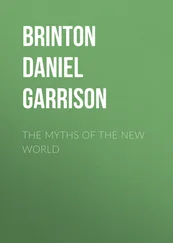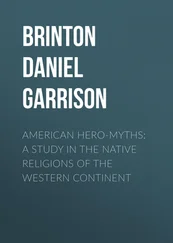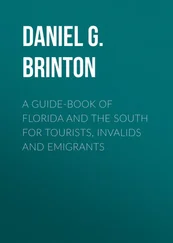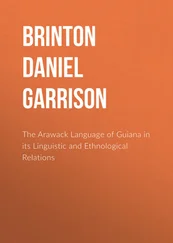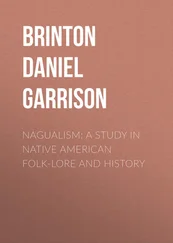Daniel Brinton - The Lenâpé and their Legends
Здесь есть возможность читать онлайн «Daniel Brinton - The Lenâpé and their Legends» — ознакомительный отрывок электронной книги совершенно бесплатно, а после прочтения отрывка купить полную версию. В некоторых случаях можно слушать аудио, скачать через торрент в формате fb2 и присутствует краткое содержание. Жанр: foreign_antique, foreign_prose, на английском языке. Описание произведения, (предисловие) а так же отзывы посетителей доступны на портале библиотеки ЛибКат.
- Название:The Lenâpé and their Legends
- Автор:
- Жанр:
- Год:неизвестен
- ISBN:нет данных
- Рейтинг книги:4 / 5. Голосов: 1
-
Избранное:Добавить в избранное
- Отзывы:
-
Ваша оценка:
- 80
- 1
- 2
- 3
- 4
- 5
The Lenâpé and their Legends: краткое содержание, описание и аннотация
Предлагаем к чтению аннотацию, описание, краткое содержание или предисловие (зависит от того, что написал сам автор книги «The Lenâpé and their Legends»). Если вы не нашли необходимую информацию о книге — напишите в комментариях, мы постараемся отыскать её.
The Lenâpé and their Legends — читать онлайн ознакомительный отрывок
Ниже представлен текст книги, разбитый по страницам. Система сохранения места последней прочитанной страницы, позволяет с удобством читать онлайн бесплатно книгу «The Lenâpé and their Legends», без необходимости каждый раз заново искать на чём Вы остановились. Поставьте закладку, и сможете в любой момент перейти на страницу, на которой закончили чтение.
Интервал:
Закладка:
These chieftains were the "peace chiefs." They could neither go to war themselves, nor send nor receive the war belt – the ominous string of dark wampum, which indicated that the tempest of strife was to be let loose. Their proper badge was the wampum belt, with a diamond-shaped figure in the centre, worked in white beads, which was the symbol of the peaceful council fire, and was called by that name.
War was declared by the people at the instigation of the "war captains," valorous braves of any birth or family who had distinguished themselves by personal prowess, and especially by good success in forays against the enemy. [81] Footnote_81_81 For these particulars see Ettwein, Traditions and Language of the Indians , in Bulletin of the Pa. Hist. Soc. , Vol. I; Charles Beatty, Journal of a Tour, etc. , p. 51.
Nor did the authority of the chiefs extend to any infringement on the traditional rights of the gens, as, for instance, that of blood revenge. The ignorance of this limitation of the central power led to various misunderstandings at the time, on the part of the colonial authorities, and since then, by later historians. Thus, in 1728, "the Delaware Indians on Brandywine" were summoned by the Governor to answer about a murder. Their chief, Civility, answered that it was committed by the Minisinks, "over whom they had no authority." [82] Footnote_82_82 C. Thompson, Inquiry into the Causes of the Alienation of the Delaware and Shawnee Indians , p. 16.
This did not mean but that in some matters authority could be exerted, but not in a question relating to a feud of blood.
The Lenape did not depend solely on the chase for subsistence. They were largely agricultural, and raised a variety of edible plants. Indian corn was, as usual, the staple; but in addition to that, they had extensive fields of squashes, beans and sweet potatoes. [83] Footnote_83_83 I assign them the sweet potato on the excellent authority of Dr. C. Thompson, Essay on Indian Affairs , in Colls. of the Hist. Soc. of Penna. , Vol. I, p. 81.
The hardy variety of tobacco was also freely cultivated.
The value of Indian corn, the Zea mais , must have been known to the Algonkin tribes while they still formed one nation, as the same name is applied to it by tribes geographically the widest apart. Thus the Micmacs of Nova Scotia call it pe-ãs'kumun-ul whose theme ãs'ku-mun reappears in the wuskannem (Elliott) and the scannemeneash (Roger Williams) of New England, in the Delaware jesquem (Campanius), and chasquem (Zeis.), and even in the Piegan Blackfoot esko-tope .
The first radical ask , Chip. ashk , Del. aski , means "green." The application is to the green waving plant, so conspicuous in the fields during the summer months. The second mün or min is a generic suffix applied to all sorts of small edible fruits. In the Blackfoot its place is supplied by another, and in the Unami Delaware it is abbreviated to the letter m .
On the other hand, in the Chipeway word for corn, mandamin , Ottawa mindamin , Cree mattamin , the second radical is retained in full, while for the first is substituted an abbreviation of manito , divine ("it is divine, supernatural, or mysterious"); if we may accept the opinion of Mr. Schoolcraft, and I know of no more plausible etymology.
Tobacco was called by the Delawares kscha-tey , Zeis., seka-ta , Camp., or in the English orthography shuate (Vocab. N. J. Inds.), and koshãhtahe (Cummmings). I am inclined to think that these are but dialectic variations and different orthographies of the root 'ta or 'dam ( a nasal) found in the New England wuttãm-anog , Micmac tùmawa , Abnaki wh'dãman (Rasle), Cree tchistémaw , Chip. assema (= asté-maw ), Blackfoot pi-stã-kan ; a root which Dr. J. H. Trumbull has satisfactorily identified as meaning "to drink," the smoke being swallowed and likened to water. "To drink tobacco" was the usual old English expression for "to smoke."
If this etymology is correct, it leads to the inference that tobacco also was known to the ancient Algonkins before they split up into the many nations which we now know, and furthermore that they must have lived in a region where these two semi-tropical or wholly tropical plants, Indian corn and tobacco, had been already introduced and cultivated by some more ancient race. To conclude that they themselves brought them from a tropical land, would be too hazardous.
The pipes in which the tobacco was smoked were called appooke (modern Delaware o'pahokun' , Cumings' Vocab.) They were of earthenware and of stone; sometimes, it is said, of copper. According to Kalm, the ceremonial pipes were of a red stone, possibly the western pipe stone, and were very highly prized. [84] Footnote_84_84 Peter Kalm, Travels in North America , Vol. II, p. 42.
Of wild fruits and plants they consumed the esculent and nutritious tubers on the roots of the Wild Bean, Apios tuberosa , the large, oval, fleshy roots of the arrow-leaved Sagittaria , the former of which the Indians called hobbenis , and the latter katniss , names which they subsequently applied to the European turnip. They also roasted and ate the acrid cormus of the Indian turnip, Arum triphyllum , in Delaware taw-ho , taw-hin or tuck-ah , and collected for food the seeds of the Golden Club, Orontium aquaticum , common in the pools along the creeks and rivers. Its native name was taw-kee . [85] Footnote_85_85 See Peter Kalm, Travels in North America , Vol. II, pp. 110-115; William Darlington, Flora Cestrica . (West Chester, Pa., 1837.)
In their domestic architecture they differed noticeably from the Iroquois and even the Mohegans. Their houses were not communal, but each family had its separate residence, a wattled hut, with rounded top, thatched with mats woven of the long leaves of the Indian corn or the stalks of the sweet flag ( Acorus calamus ,) or of the bark of trees ( anacon , a mat, Z.) These were built in groups and surrounded with a palisade to protect the inhabitants from sudden inroads. [86] Footnote_86_86 For these facts, see Bishop Ettwem's article on the Traditions and Languages of the Indians, Bulletin of the Pa. Hist. Soc. , 1848, p. 32. Van der Donck (1656) describes these palisaded strongholds, and Campanius (1642-48) gives a picture of one. See also E. de Schweimtz, Life of Zeisberger , p. 83. The Mohegan houses were sometimes 180 feet long, by about 20 feet wide, and occupied by numerous families. Van der Donck, Descrip. of the New Netherlands , pp. 196-7. Coll. N. Y. Hist. Soc. , Ser. II, Vol. I. The native name of these wooden forts was menachk , derived from manachen , to cut wood (Cree, manikka , to cut with a hatchet). Roger Williams calls them aumansk , a form of the same word.
In the centre was sometimes erected a mound of earth, both as a place of observation and as a location to place the children and women. The remains of these circular ramparts enclosing a central mound were seen by the early settlers at the Falls of the Delaware and up the Lehigh valley.
The art of the potter was known and extensively practiced, but did not indicate any unusual proficiency, either in the process of manufacture or in the methods of decoration, although the late Mr. F. Peale thought that, in the latter respect, the Delaware pottery had some claims to a high rank. [87] Footnote_87_87 See the communication on "Pottery on the Delaware," by him, in the Proceedings of the Am. Phil. Soc. , 1868. The whole subject of the archæology of the Delaware valley and New Jersey has been treated in the most satisfactory manner by the distinguished antiquary, Dr. Charles C. Abbott, in his work, Primitive Industry (Salem, Mass., 1881), and his Stone Age in New Jersey (1877).
The representation of animal forms was quite unusual, only some few and inferior examples having been found.
Интервал:
Закладка:
Похожие книги на «The Lenâpé and their Legends»
Представляем Вашему вниманию похожие книги на «The Lenâpé and their Legends» списком для выбора. Мы отобрали схожую по названию и смыслу литературу в надежде предоставить читателям больше вариантов отыскать новые, интересные, ещё непрочитанные произведения.
Обсуждение, отзывы о книге «The Lenâpé and their Legends» и просто собственные мнения читателей. Оставьте ваши комментарии, напишите, что Вы думаете о произведении, его смысле или главных героях. Укажите что конкретно понравилось, а что нет, и почему Вы так считаете.




